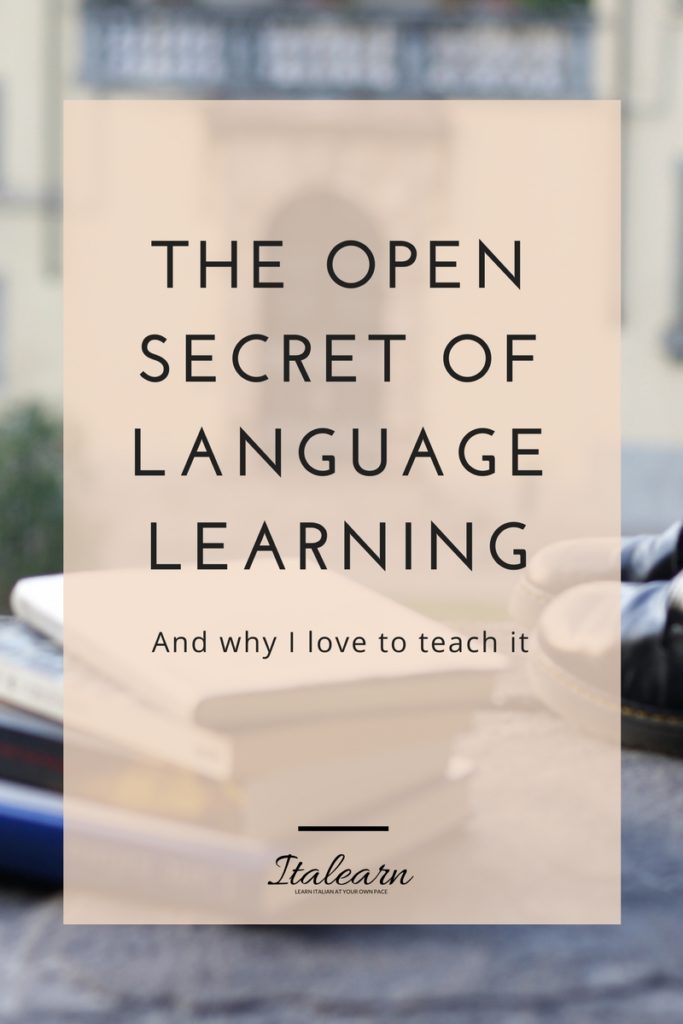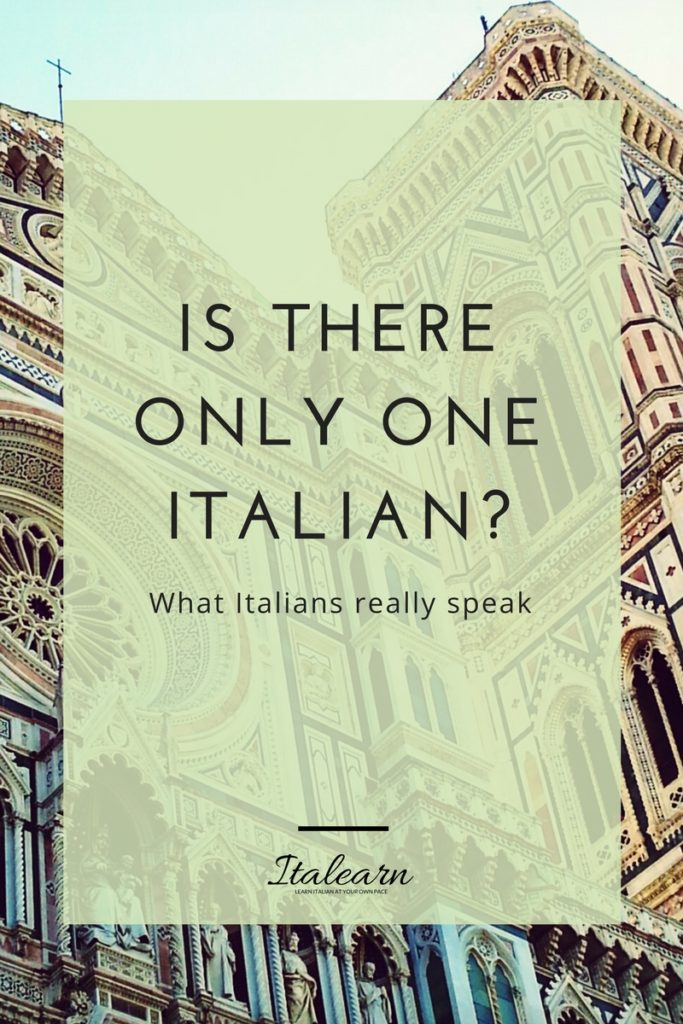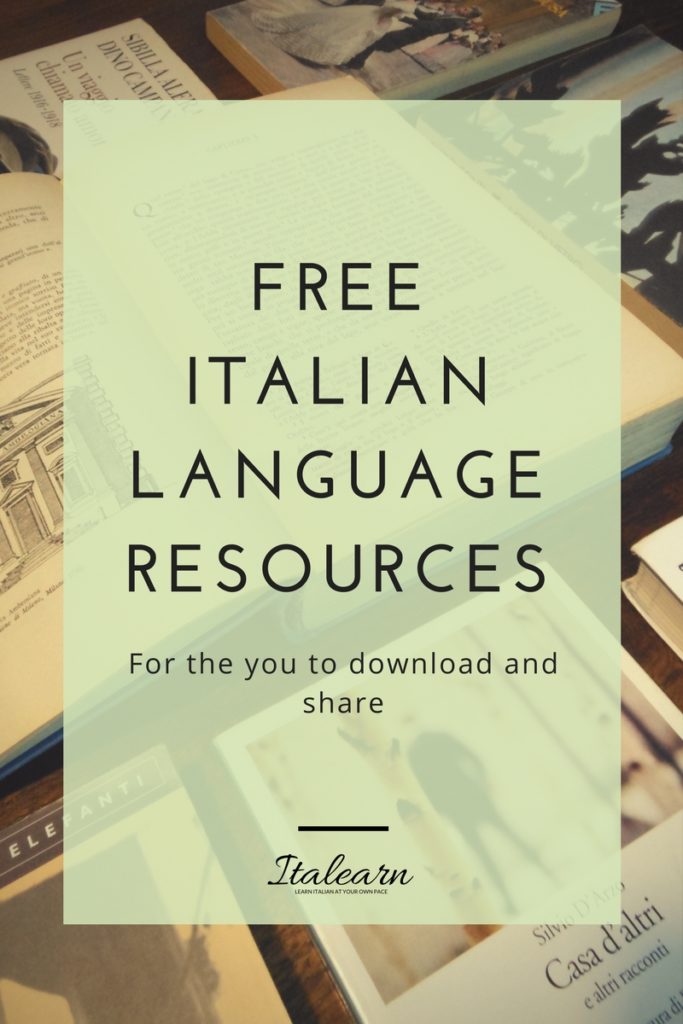What a title! You might think I’m a crazy teacher, thinking I can tell you to stop studying and just use creativity?
Isn’t it the only way to truly make progress? What else can you do to learn Italian if not studying it? And studying it as much as you can? What does creativity have to do with language learning?
Well, call me your crazy teacher, but I think there are a lot more interesting things to do with the language than purely studying it.
My approach to teaching (and learning) is unconventional because I naturally get bored easily and I know that when things get too “schooly” they probably don’t work too well.
I also know that when you hold something in your hands, something that you have made, you feel so good — I think our hormones have something to do with this mood?
I remember, when I was in primary school, we had to make those Christmas trees with wooden clothespins and for Mother’s day and Father’s day we had to make portraits of our parents, or some other nicety: they were so ugly, but we were so proud of them, I mean, we made them with our hands, for our family, we did it with love.
Focus on that feeling for a second, visualize it, try to relive it if you want to (realistic is close to real, no?). This is why making creative exercises part of your Italian learning routine will improve your output — by output I mean everything you do with the language: reading, writing, speaking, singing, dreaming, etc.
Are you ready to dive into this artistic Italian boot camp?
Here is what you need:
- Text in Italian — this can be any text you can find online and offline, but I would avoid technical manuals or scientific content if this is your first time using creative techniques. When you become more familiar with them you can also try scientific texts, it is going to be challenging!
- Print 2 copies of the text, change the font so you will have a more visually varied final piece. Also, play with the font size, font color, print paper.
- Collect clippings from magazines, newspapers, old books, food wrappers, etc. These can be both text and images. More material you might want to add: carton, paper bags, dried leaves, dried flowers, old postcards, ribbons, fabrics, etc.
The tools you are going to need are:
- blank cardboard (any size), scissors, glue, markers, watercolors (optional), tape (different kinds if you can find them).
Why all this stuff? Because you are going to make a poster with your final piece of writing. The tangible proof of your love for Italian.
The techniques we are going to experiment with are nothing new in the writing world: they date back to the beginning of the 20th century and they were mostly invented by surrealists. Many famous writers have used them and you should too.
The cut-up technique
Take one of the printed copies of your text and cut it into small pieces of either one word or short sequences of words.
Now write your own story or poem by picking random clippings. This is the fun part, but also the most complicated. Here is where your sentence making abilities will take center stage.
You are apparently just playing with words and paper, and this is going to take all the pressure off. But what you maybe don’t know is that your brain is actively working on and with the language.
Even if you want to make your poem as free and crazy as it comes to your mind, you will be looking for meaning. And if you want to make meaningful sentences in Italian you will use the grammar rules you have already studied, you will try to remember something you have already read, you will try to remember something you have already listened to. All your previous knowledge will serve you automatically, you will only need to channel it and make beautiful content.
The second part of the exercise is indeed centered on making a collage with your newly created text and the materials you have collected. Play with layers, colors, transparencies. You are the artist.
The found poetry technique
This exercise is somehow similar to the previous one, but it is perhaps more controlled. Take your other copy of the text and start altering it in order to have a different text at the end.
The way I go about it is I skim through the article and find a word that gets my attention. I circle it lightly with a pencil and keep scanning the text for other words or short sentences that could be a natural continuation to each other.
At this point you can cut out the circled words and make a collage as you did for the cut-up technique. Again, when you build this kind of text you are actively searching for the right parts of speech to go together and you are finding a way to make everything harmonious and beautiful.
You are fine tuning your abilities to write and consequently to speak, but you are doing it without consciously thinking about it. Also, the vocabulary research that might be involved in this work is both active and passive acquisition of the language. Active because you are looking the words up and reading their definition. Passive because you are mentally placing each new word in a context that you are creating.
Even if you don’t notice it at first, you are processing a lot of information just by doing a relaxing creative activity. And this new information will be retained.
Read the dictionary technique
Well, I don’t know if we can call this a technique, or if anybody is using it beside the nerd me, but I think it is worth experimenting with.
The title is pretty self-explanatory: take a dictionary, open it and choose a random word. If you don’t have an Italian dictionary, just use any that you have at home because you only need it to choose the word. I guess there are sites or apps that allow you to randomly pick words, so if it’s your only option, use it.
Now that you have your word, either make a scan/photocopy or picture of its definition. If you have started with a word in another language just translate it and type the translation into an Italian online dictionary. Screenshot the definition and you’re ready to go. Actually, don’t forget to print it out if you are going to make another collage — highly recommended!
The reason we do this exercise is simply to cultivate our curiosity and to learn to make good use of elements that are not normally in our scope of action. Chances are the word you pick is new to you and doesn’t probably have any real application in your interactions — yet.
But there are so many little things you can learn from a dictionary entry: the occasions where the word can be used, how many different meanings it can have, if it is a commonly used word or if it is obsolete, etc. Make this dictionary entry into a visually engaging artwork, keep it in your notebook and use it as the beginning of a story or poem.
Let your creative mind explore
Creativity can take you a long way, if you let her into your learning routine. Sometimes our expectations are so high that it becomes frustrating when things don’t turn out the way we expected them to. It’s exactly at this point that you need to slow down and learn Italian just for the pleasure of learning it.
Creative thinking will change the way you look at language, for the better. And having pieces of art, your art, that you can look at, it’s invaluable.
No matter the current level of your Italian, you can enjoy writing and reading on your own. We’ll take it slowly, like Italians sipping a glass of wine watching the sunset. This is not about rules, grammar, perfection. This is about the pleasure of learning Italian. When you do something you love, it becomes easier. And when it’s easier you stop worrying. And when you stop worrying you learn.
What are the ingredients of the cake that you don’t have to measure? A little bit of your time, your creativity and your heart.
As far as I’m concerned, I’m going to give you the tools and the techniques you need (for 3 weeks after you download the story). I’ll be like your granma: letting you do the work, but being with you all the time in case you need me.


Get better at Italian through creative exercises. Sign up for the free mini-course A story and 5 creative ways to fall in love with Italian and I'll send you the story straight away.
PS: no artistic skills required!
Thank you!
Check your inbox! You have just received an email from me so you can confirm that you really, really want to receive the free guide and updates from me.
Silvia



